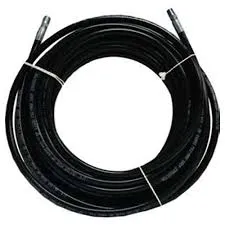straight pipe coupling
Understanding Straight Pipe Couplings Essential Components in Piping Systems
In industrial and construction applications, the efficiency and reliability of piping systems are paramount. Among the various components that facilitate the connection and functionality of these systems, straight pipe couplings play a crucial role. This article explores the significance, types, and applications of straight pipe couplings.
What is a Straight Pipe Coupling?
A straight pipe coupling is a fitting used to connect two straight lengths of pipe. It allows for the seamless continuation of a pipe run, ensuring that the flow of fluids—be it water, gas, or chemicals—remains uninterrupted. These couplings are typically cylindrical and are available in various materials, including PVC, stainless steel, and copper, designed to accommodate different pressure ratings and environmental conditions.
Types of Straight Pipe Couplings
1. Slip Couplings These are basic couplings that fit over the ends of two pipes. They are ideal for pipes of the same diameter and are often used in repair projects to replace damaged sections without extensive disassembly.
2. Compression Couplings These couplings use a compression mechanism to secure pipes together. They are particularly useful for pipes made of different materials as they provide a tight seal without welding or soldering.
3. Threaded Couplings Featuring internal threads, these couplings connect pipes with external threads. They are commonly used in plumbing applications, where they provide a robust and leak-proof connection.
4. Socket Weld Couplings Designed for use in high-pressure systems, socket weld couplings allow pipes to be inserted into the coupling and are then welded in place. This method provides strong joints needed for critical applications.
straight pipe coupling

5. Flanged Couplings These couplings are mounted using bolts and allow for easy disassembly. They are particularly useful in applications where regular maintenance is required.
Applications of Straight Pipe Couplings
Straight pipe couplings find their application in various industries, including
- Water Supply Systems In municipal infrastructure, couplings help to maintain the flow in water supply lines, facilitating the transportation of potable water.
- Sewer and Drainage These fittings are essential in sewage systems, connecting pipes that transport wastewater efficiently.
- Oil and Gas In the energy sector, couplings are critical for ensuring safe and reliable transport of hydrocarbons through pipelines.
- HVAC Systems In heating, ventilation, and air conditioning systems, straight pipe couplings connect ductwork, ensuring that air flows effectively.
Conclusion
Straight pipe couplings are fundamental components of piping systems across multiple sectors. Their versatility, available in various types and materials, enables them to be tailored to specific application needs. Understanding the different types and their respective functionalities is essential for engineers and technicians to ensure the integrity and efficacy of piping systems. With ongoing advancements in materials and design, the role of straight pipe couplings will continue to evolve, enhancing the efficiency and safety of fluid transport in various industries.
-
Ultimate Spiral Protection for Hoses & CablesNewsJun.26,2025
-
The Ultimate Quick-Connect Solutions for Every NeedNewsJun.26,2025
-
SAE J1401 Brake Hose: Reliable Choice for Safe BrakingNewsJun.26,2025
-
Reliable J2064 A/C Hoses for Real-World Cooling NeedsNewsJun.26,2025
-
Heavy-Duty Sewer Jetting Hoses Built to LastNewsJun.26,2025
-
Fix Power Steering Tube Leaks Fast – Durable & Affordable SolutionNewsJun.26,2025

